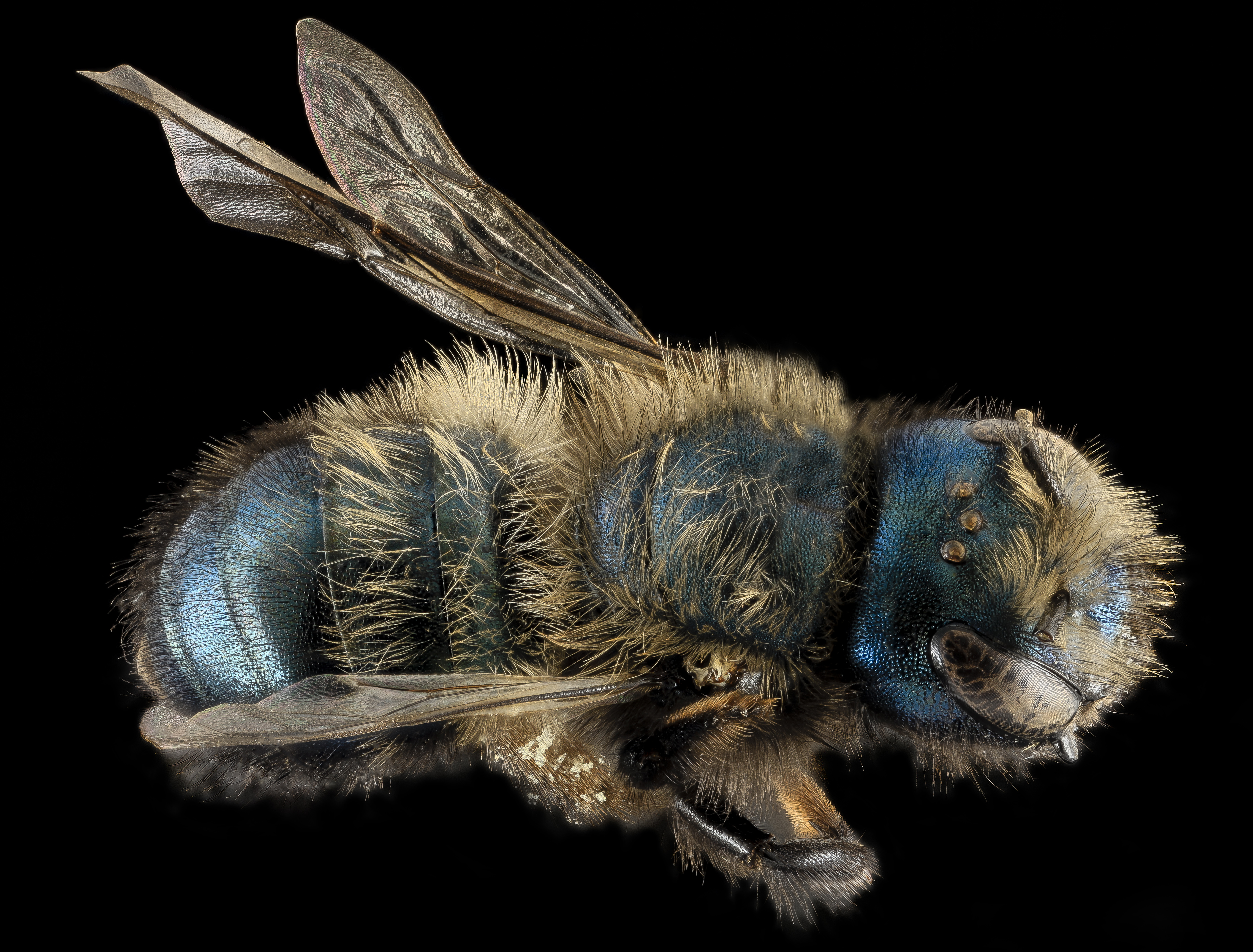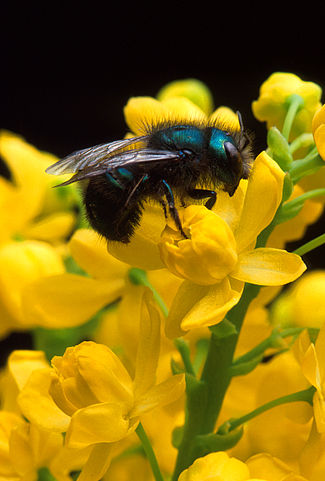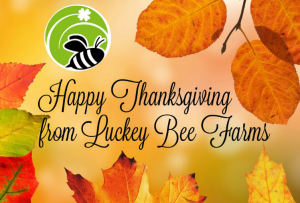Blue Orchard Bees
By Sy Maher
Native bees are vastly unappreciated. We can boast 4000 different species, such as the Blue Orchard bee, a native to the Americas.

Blue Orchard Bee
Adult males emerge first and start buzzing around potential sites waiting for the appearance of females to mate. Male orchid bees collect scents in special chambers in their hind legs. Scientists think they are collecting scents to attract females.

The classic Blue Orchard Bee
Males are a beautiful metallic dark blue or blue-green with a white distinct patch on their face. Blue Orchard Bees are about two-thirds the size of a honeybee. Females are the size of a Honey bee and have the same color but with no white markings on the face.
After mating, a female waits a couple of days and start looking for a home. Like many wild bees, they do not make a hive but look for a preexisting site. Females pick something left behind by insects in burrows, dead logs, reeds or stumps. If she likes the nest, she buzzes around the opening in a wide zigzagging flight claiming that site as her own. Solitary bees are sometimes neighborly. They often nest near one another in large numbers, but each female is fertile and builds her own nest.
Orchard Bees are not aggressive. Not even when someone gets close to her nest. Yes, the female can sting, she doesn’t want to. One would have to grab the bee, step on it, or maybe get it trapped in one’s clothing to agitate her enough to sting. If she does sting, although rare, their stringer is much shorter and less painful than the Honey bee.
Like any Mason bee, the Blue Orchard bee will lay eggs on a stockpile of pollen and then mud the little partition up and start the process again.
![By Red58bill (Own work) [Public domain], via Wikimedia Commons](https://luckeybee.com/wp-content/uploads/2017/11/Masoncocoons.jpg)
Orchard Mason Bee cocooned larva

Orchard mason bees limit their foraging to about 100 yards from the nest which continues for 4-6 weeks. Putting up man-made structures for them to live in is a new trend. More Orchard bees mean more pollination. Blue Orchard bees are better at and get more pollinating accomplished this way. What do they pollinate? Sweetpea, Almond, Plum, Prune, Pear, Cinquefoil; Potentilla, Cherry, Peach, Nectarine, blueberries, strawberries, Dandelion and many other plants. Farmers and backyard garden enthusiasts are helping orchard bees by utilizing their unique skills.
Our earth is filled with so many amazing bees. Let’s keep helping them.
Sources
https://askabiologist.asu.edu/explore/orchid_bees
https://en.wikipedia.org/wiki/Osmia_lignaria
http://www.sare.org/publications/bee/blue_orchard_bee.pdf
https://askabiologist.asu.edu/explore/orchid_bees
http://www.orchardbees.com/NativePollinators.html
Pictures
Cover picture
By Scott Bauer, USDA ARS [Public domain], via Wikimedia Commons
Blue Orchard bee by Linden Gledhill
By Red58bill (Own work) [Public domain], via Wikimedia Commons
CC BY-SA 3.0, https://commons.wikimedia.org/w/index.php?curid=114919
Public Domain, https://commons.wikimedia.org/w/index.php?curid=116940


